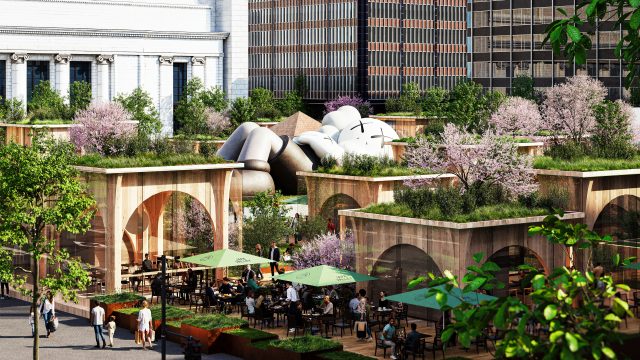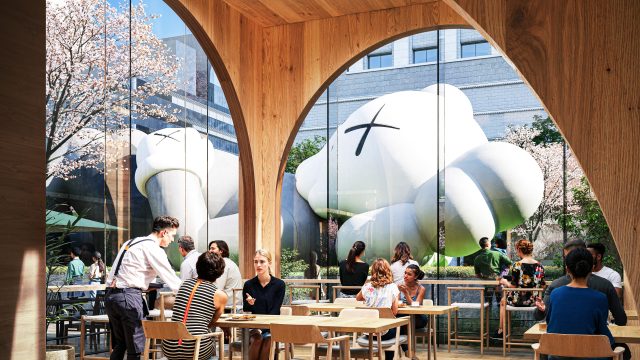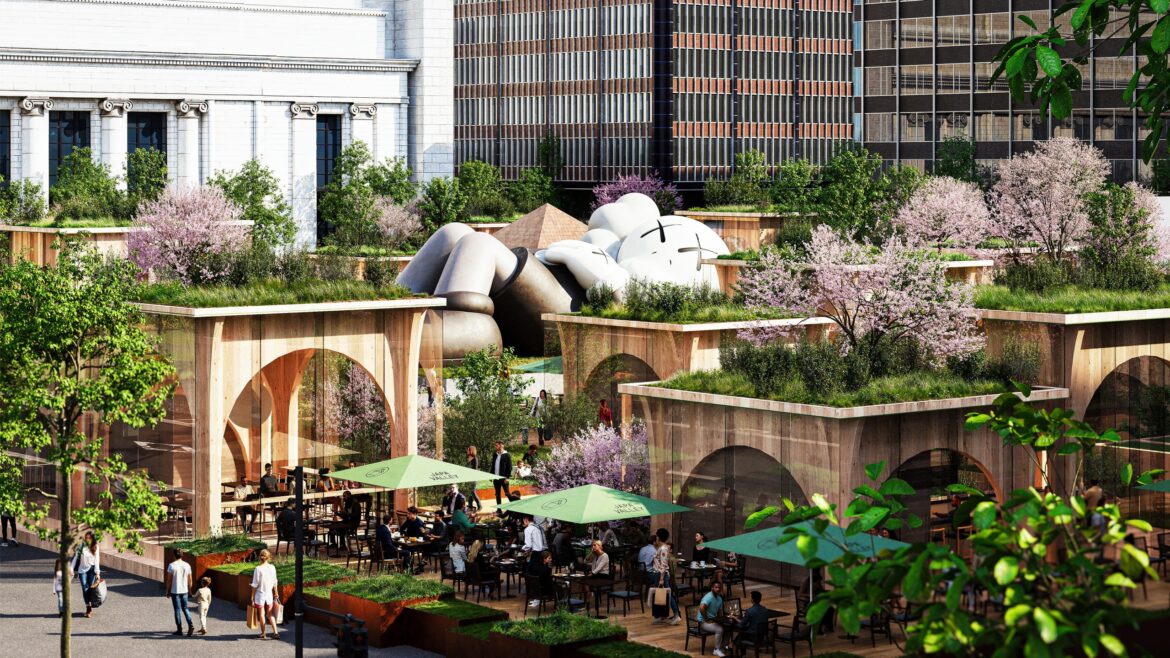The Happy singer is planning to open a Napa Valley-inspired lifestyle hub in Japan by 2027. But instead of Californian wine, sake will be the focus at the Tokyo-based complex.

Pharrell Williams is currently putting together the building blocks of Japa Valley Tokyo, a food, drink and fashion-based cultural hub to be located in Yurakucho Park, Tokyo. Working with Japanese fashion designer Nigo and hospitality group Not A Hotel, the singer plans to cut the ribbon on the “Napa Valley-inspired” complex by 2027.
Japa Valley Tokyo is expected to spread out over a hectare, occupying the site of the former Shin-Yurakucho Building. Williams intends for the venue to become a major tourist attraction and is modelling the project on Californian wine country. Drawing inspiration from “the rolling hills of Napa Valley”, the musician says that his Tokyo equivalent will swap out wine for Japanese sake.
“Japa Valley reimagines the tourism model through the lens of craftsmanship, creatively reinterpreting California’s Napa Valley by swapping wine production for the masterful art of Japanese sake brewing,” reads a mission statement.
It has not yet been revealed exactly how sake will be at the heart of the endeavour, but it’s safe to assume there will be sake tastings and substantial sake lists inside Japa Valley’s restaurants.
Poster child for tourism
Not A Hotel is the ‘chief architect’ for the project, while Williams and Nigo, who is the artistic director for Kenzo and founder of streetwear brand A Bathing Ape, are described as ‘co-chief visionaries’. All three parties will be responsible for bringing Japa Valley Tokyo to life and weaving in successful strategies from California’s most famous wine region.
Napa Valley is widely held to be the poster child for premium wine tourism, so it’s not surprising that Williams would want to follow its blueprint. While wine is the epicentre of the region, a solar system of other food, drink and travel experiences orbit the vineyards and cellars, bringing in additional spend.
Last year, for example, Napa transformed one of its historic rail stations into a gleaming food and drink emporium, complete with added gin distillery. Guests can dine inside vintage rail carriages on the original station platform, tucking into tacos, oysters and caviar alongside Champagne and cocktails. An on-site retail store is stacked high with gourmet and artisanal goods, including a wide selection of wines from Calistoga and Napa Valley. It’s this kind of example that Williams is likely to want to emulate.
Accessibility is everything
As with all tourist attractions, accessibility is everything. Napa said last year that it will splurge US$11 million on three new wine trains to transport tourists around the region. The locomotives, which will be “nearly silent and odourless”, are part of a broader bid to make Napa greener and more sustainable for future generations. It’s no coincidence that Tokyo’s Yurakucho district, where Williams’ Japa Valley will be based, has its own train station.
The musician is yet to reveal whether experiences at Japa Valley Tokyo will have similarly stratospheric price tags attached to them as their Napa counterparts. With the average bottle of Napa wine now costing US$108, according to a report by Silicon Valley Bank’s wine division, and the average Napa tasting room visit setting customers back US$81 per person, the entire Napa ecosystem is a lucrative money spinner.
Napa wineries have also embedded themselves in numerous ‘cultural moments’, including Stag’s Leap becoming the official wine partner of Cirque de Soleil and Charles Krug Winery playing host to classical singer Andrea Bocelli’s Weekend in Napa, transforming its estate into a replica Tuscan village complete with food and retail pop-ups.

Sake tourism
Japan is looking to expand the appeal of sake internationally, staging a host of initiatives to connect foreign tourists with the traditional rice wine. In June, one of the largest private railway companies in Japan launched a sake vending machine inside its Tobu Nikko Station, with four different brands to try. The idea was to capture the interest of tourists passing through the rail station and encourage them to “enjoy regional sake”.
Meanwhile, events such as the Fukuju Sake Cocktail Competition, held in May, are inviting bartenders to push the boundaries of sake in cocktails, promoting the reflecting the broader potential for sake beyond its traditional role as an accompaniment to Japanese cuisine.
Pharrell Williams has said that his Japa Valley Tokyo hub will “blend art, fashion, food, and hospitality,”, opening up opportunities for a range of sake-based merchandise and experiences. He has also said that “cultural fusion” will be a key theme, suggesting that an East-meets-West ethos could be prevalent.
Related news
Why sake deserves a place next to wine in the beverage world
Sake moves beyond the sushi bar
Japan’s rice crisis: how a table rice shortage is taking a toll on sake


AloJapan.com